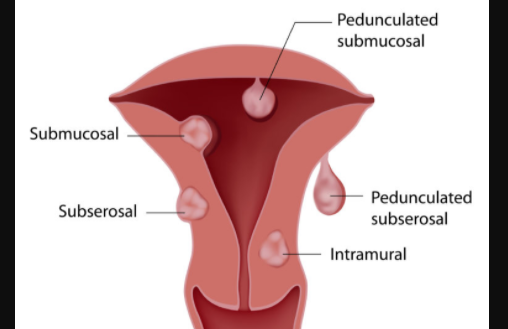

Symptoms
Most of the time there are no symptoms, and only 10 to 20 % women may require treatment.
According to the size, location and number of fibroids, a woman may feel these symptoms:
Pelvic pain.
Pelvic pressure due to weight of the fibroid.
Pain in the back due to the pressure of fibroids on the nerves of legs and pelvis.
Pain during intercourse.
Constant need to urinate.
Bloating and constipation.
Abdomen has grown abnormally large.
Long periods and unusual monthly bleeding even clots.
This may cause anemia.
Diagnosis
If you have large fibroids, they can be diagnosed through physical examination. Most of the time, fibroids are diagnosed through ultrasound. There are some cases in which MRI is used to collect the most information about the fibroid, and to see whether fibroids are responding to the treatment or not.
Treatment
There are many treatments for this problem, some of them will save your uterus and some will not. The fibroids treatment will depend on the age of the patient and whether or not she wants to have a baby.
The treatments which will save your uterus involve blocking the supply of blood to uterus through a small artery hole. In some cases, the physician may even remove the fibroid surgically. There may be hormonal treatments present for the patient.
The course of treatment suitable for a patient depends on the symptoms she is experiencing and the impacts of these symptoms on the quality of life. The treatment will also depend upon whether you wish to have a baby now or you want to have baby sometime in the future .
Dr Nikolas Charalambous is named among the most prominent interventional radiologist. Get a free consultation for a minimally invasive treatment of brain, neck, and spine.